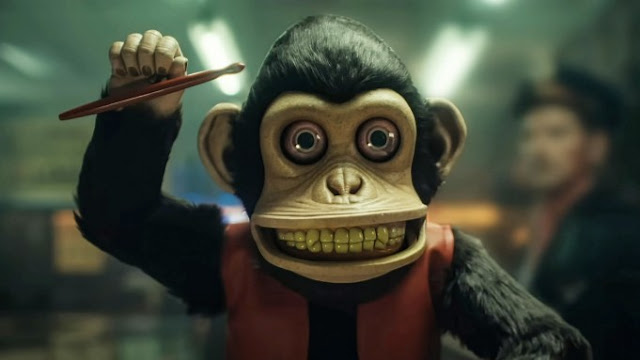The Monkey Review: Fear is the Key in a Terrifyingly Brilliant Toy Story
In the realm of horror, few tales have captured the essence of fear as effectively as Stephen King's "The Monkey," a short story that has now been adapted into a film by director Osgood Perkins. This adaptation not only brings to life the terrifying narrative of a cursed toy but also delves into themes of family, trauma, and the darker aspects of human nature.
The Cursed Toy: A Symbol of Terror
At its core, "The Monkey" revolves around a wind-up toy that seems to bring death and misfortune whenever it is activated. In King's original story, this toy is depicted as a cymbal-banging monkey whose ominous presence foretells tragic events4. However, due to copyright issues related to Disney's use of such toys in Toy Story 3, Perkins' adaptation features a drumming gadget instead3. Despite this change, the essence remains intact: an innocent-looking toy becomes an instrument of terror.
From Sombre Horror to Black Comedy
Perkins' film takes significant creative liberties with King's sombre tale by infusing it with elements of black comedy and gore. This shift transforms "The Monkey" from a morose exploration into a darkly humorous narrative that still retains its chilling impact13. By embracing this new tone, Perkins aligns himself more closely with classic horror-comedies reminiscent of George A. Romero or John Carpenter3.
Themes Beyond Horror
While "The Monkey" primarily explores fear through its supernatural premise, it also delves deeper into human psychology and family dynamics. Hal Shelburn (played by Theo James), haunted by his past experiences with the monkey, must confront his estranged relationships and personal demons when he returns home after his aunt's death12. This personal journey intertwines with the mystery surrounding who might be responsible for winding up the deadly toy.
Comparison to Toy Story: Innocence vs. Malevolence
"The Monkey" can be seen as an antithesis to films like Toy Story, which portray toys as symbols of hope and friendship2. In contrast, King's cursed monkey embodies malevolence and terror—a stark reminder that even seemingly harmless objects can harbor dark powers. While Toy Story uses humor playfully without venturing into true horror territory, "The Monkey" exploits our deep-seated fears about childhood icons turning sinister.
Conclusion: A Terrifying Brilliance
"The Monkey" stands out not just for its terrifying premise but also for how it masterfully weaves together themes of family trauma and psychological suspense within its darkly comedic framework. As both an homage to classic horror tropes and an innovative take on modern storytelling techniques, Osgood Perkins' adaptation offers viewers something unique—a blend that will leave audiences both entertained and unsettled long after they leave their seats.
Ultimately, what makes "The Monkey" so compelling is how it taps into our primal fears—fears rooted in childhood innocence turned awry—and presents them in such vivid detail that one cannot help but be captivated by this twisted tale about toys gone wrong. Whether you're drawn in by Stephen King’s macabre imagination or Osgood Perkins’ bold filmmaking style, "The Monkey" promises an unforgettable experience for fans seeking something beyond conventional horror narratives.
References Used
-1 Screen Anarchy - THE MONKEY Review
-2 Screen Rant - Upcoming Stephen King Movie Adaptation
-3 BFI Sight & Sound - The Monkey review
-4 Wikipedia - The Monkey (short story)
